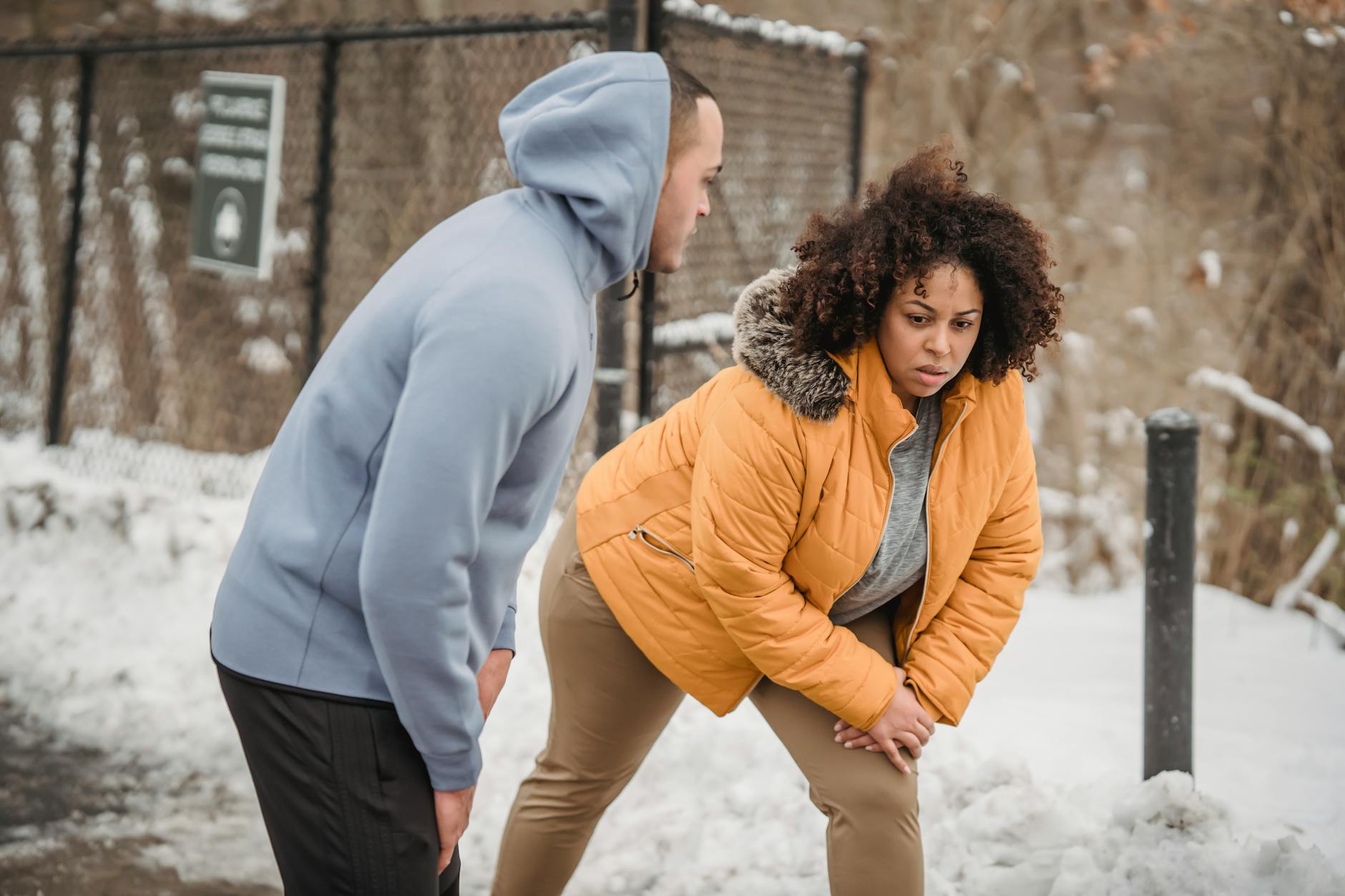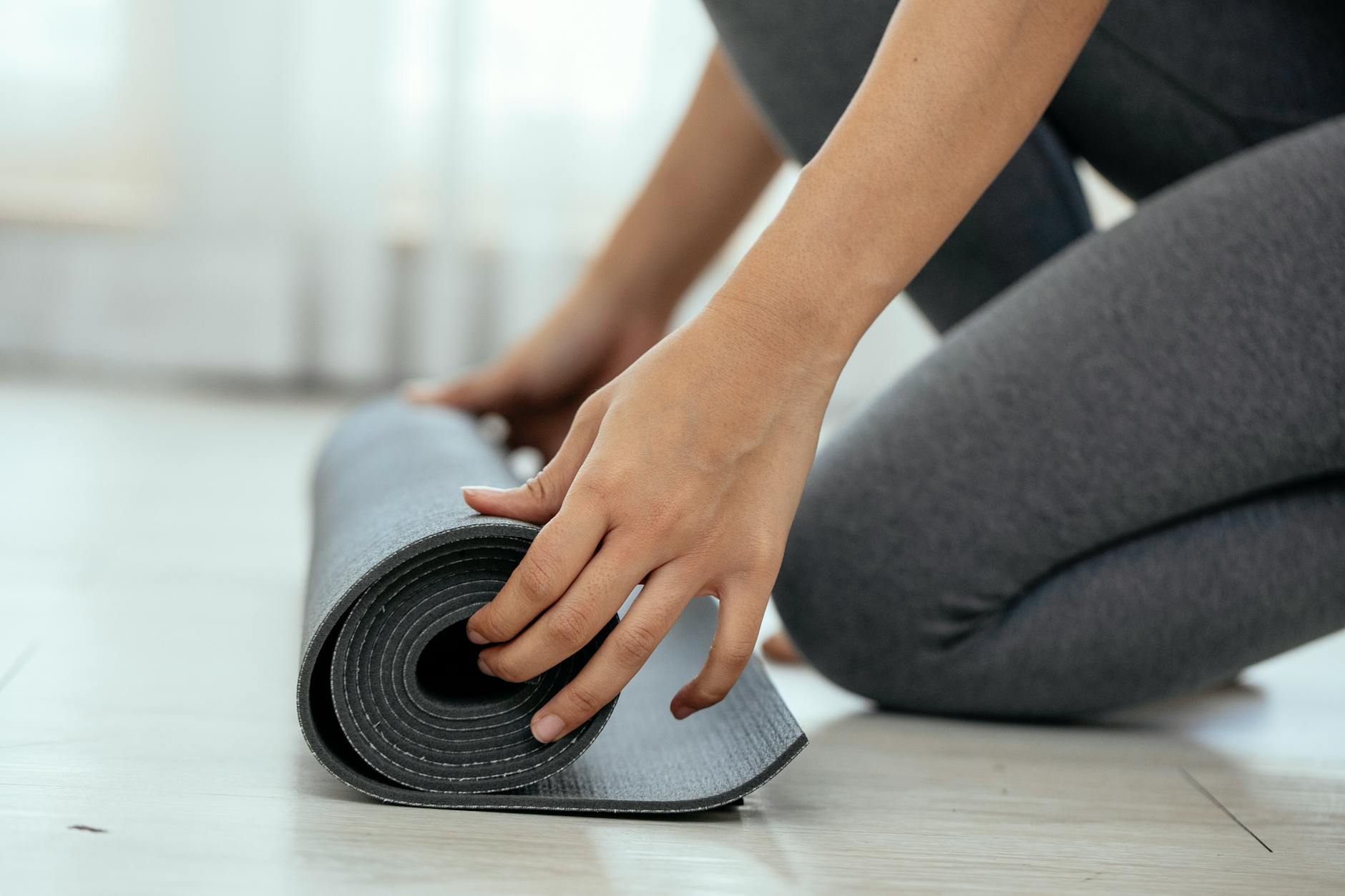5 Ways of Staying fit in Cold Winter

Feeling the winter chill creeping into your bones? Don't let the cold weather freeze your fitness goals! 🥶 As temperatures drop, it's tempting to hibernate under a warm blanket with hot cocoa. But staying active during winter is crucial for both your physical and mental well-being.
Did you know that winter workouts can actually boost your mood and immunity? 💪🏋️♀️ Whether you're an outdoor enthusiast or prefer the cozy indoors, there are plenty of ways to keep your body moving and your spirits high during the frosty months. From invigorating indoor workouts to exhilarating winter sports, we've got you covered with five fantastic strategies to stay fit and fabulous this winter.
Ready to beat the winter blues and emerge stronger come spring? Let's dive into our top tips for maintaining your fitness routine when the mercury drops. We'll explore everything from cozy indoor exercises to brisk outdoor runs, nutritious cold-weather fuel, and even ways to keep your mental health in check during those long, dark days.

Indoor Workouts for Winter Warmth
When the winter chill sets in, staying fit doesn't mean braving the cold. Indoor workouts offer a cozy alternative to maintain your fitness routine. Let's explore some effective ways to keep warm and active indoors.
A. High-intensity interval training (HIIT) routines
HIIT workouts are perfect for cold days, providing an intense calorie burn in a short time. Here's a sample HIIT routine:
-
Jumping jacks (30 seconds)
-
Push-ups (30 seconds)
-
High knees (30 seconds)
-
Mountain climbers (30 seconds)
-
Rest (30 seconds)
Repeat this circuit 3-5 times for a full-body workout.
B. Yoga for flexibility and mental well-being
Yoga not only improves flexibility but also promotes mental clarity during dreary winter days. Try this quick yoga sequence:
| Pose | Duration |
|---|---|
| Cat-Cow | 1 minute |
| Downward Dog | 30 seconds |
| Warrior I | 30 seconds each side |
| Child's Pose | 1 minute |
C. Home strength training with minimal equipment
You don't need a gym full of equipment for an effective strength workout. Use bodyweight exercises or simple tools like resistance bands. Here's a sample routine:
-
Squats (3 sets of 12)
-
Lunges (3 sets of 10 each leg)
-
Plank holds (3 sets of 30 seconds)
-
Resistance band rows (3 sets of 12)
D. Dance workouts for cardio and fun
Dancing is an excellent way to boost your mood and get your heart pumping. Put on your favorite playlist and dance for 20-30 minutes. Mix different styles to work various muscle groups and keep it interesting.
Now that we've explored indoor workouts, let's look at how you can embrace winter sports for outdoor fitness activities.
Embracing Winter Sports
Winter offers unique opportunities to stay fit while enjoying the crisp, snowy landscape. By embracing winter sports, you can maintain your fitness routine and experience the exhilaration of outdoor activities. Let's explore three popular winter sports that provide excellent workouts:
A. Skiing and snowboarding for full-body workouts
Skiing and snowboarding are not only thrilling adventures but also intense full-body workouts. These sports engage multiple muscle groups, improve balance, and boost cardiovascular health. Here's a breakdown of the benefits:
| Benefit | Skiing | Snowboarding |
|---|---|---|
| Core strength | ✓ | ✓ |
| Leg muscles | Quadriceps, hamstrings | Calves, ankles |
| Upper body | Arms, shoulders | Arms, back |
| Balance | Moderate | High |
| Calorie burn | 400-600 per hour | 350-550 per hour |
B. Ice skating for balance and leg strength
Ice skating is an excellent way to improve balance, coordination, and leg strength. Whether you're gliding gracefully or practicing figure eights, you'll be working your:
-
Quadriceps
-
Hamstrings
-
Calves
-
Glutes
-
Core muscles
C. Snowshoeing as a low-impact cardio option
For those seeking a gentler yet effective workout, snowshoeing is an ideal choice. This low-impact activity provides a great cardio workout while being easy on the joints. Benefits include:
-
Improved cardiovascular health
-
Enhanced endurance
-
Strengthened leg and hip muscles
-
Calorie burn of 400-1000 per hour, depending on intensity
By incorporating these winter sports into your fitness routine, you'll not only stay active during the colder months but also discover new ways to enjoy the winter wonderland. Next, we'll explore how proper nutrition can support your cold-weather fitness endeavors.
Nutrition for Cold Weather Fitness
As the temperature drops, it's crucial to adjust your diet to support your fitness goals and overall health during winter. Let's explore some key nutritional strategies to keep you energized and healthy throughout the cold season.
Warming, nutrient-rich soups and stews
Soups and stews are perfect for cold weather, offering both warmth and nutrition. These hearty meals can be packed with vegetables, lean proteins, and whole grains, providing a balanced mix of nutrients. Here's a comparison of popular winter soups:
| Soup Type | Key Nutrients | Benefits |
|---|---|---|
| Chicken Noodle | Protein, Zinc | Immune support |
| Lentil | Fiber, Iron | Sustained energy |
| Vegetable | Vitamins A, C | Antioxidant boost |
| Bone Broth | Collagen, Minerals | Joint health |
Hydration tips for winter workouts
Staying hydrated is just as important in winter as it is in summer. Consider these hydration strategies:
-
Drink room temperature water to avoid shocking your system
-
Incorporate warm herbal teas into your routine
-
Use electrolyte drinks for intense winter workouts
-
Monitor urine color to ensure proper hydration
Immune-boosting foods to stay healthy
Winter often brings an increased risk of illness. Incorporate these immune-boosting foods into your diet:
-
Citrus fruits (vitamin C)
-
Garlic (allicin)
-
Yogurt (probiotics)
-
Spinach (antioxidants)
Balanced meals for sustained energy
To maintain energy levels during cold weather, focus on balanced meals that include:
-
Complex carbohydrates for slow-release energy
-
Lean proteins to support muscle repair
-
Healthy fats for hormone balance and satiety
-
Colorful vegetables for essential vitamins and minerals
By following these nutritional guidelines, you'll be well-equipped to maintain your fitness routine and overall health throughout the winter months. Next, we'll explore the benefits of outdoor winter running and how to do it safely.
Outdoor Winter Running
Now that we've explored indoor workouts and winter sports, let's venture outside for some invigorating winter runs. With the right preparation and mindset, outdoor running can be a rewarding cold-weather activity.
A. Proper layering techniques for comfort
Layering is crucial for maintaining comfort during winter runs. Here's a guide to effective layering:
-
Base layer: Moisture-wicking material
-
Middle layer: Insulating fleece or wool
-
Outer layer: Windproof and water-resistant jacket
| Layer | Function | Material |
|---|---|---|
| Base | Wicks sweat | Synthetic or merino wool |
| Middle | Insulates | Fleece or wool |
| Outer | Protects | Windproof/water-resistant |
B. Safety tips for icy conditions
Running on icy surfaces requires extra caution. Follow these safety measures:
-
Wear shoes with good traction or add slip-on ice grips
-
Shorten your stride and keep your center of gravity low
-
Run on cleared paths or packed snow when possible
-
Be visible with reflective gear and lights
C. Motivation strategies for cold-weather runs
Staying motivated during chilly runs can be challenging. Try these strategies:
-
Set achievable winter-specific goals
-
Join a winter running group for accountability
-
Reward yourself after cold runs (e.g., hot cocoa)
-
Focus on the mental toughness you're building
D. Post-run recovery practices
Proper recovery is essential after braving the cold. Consider these practices:
-
Change into dry clothes immediately after your run
-
Hydrate with warm fluids to restore body temperature
-
Stretch in a warm environment to prevent muscle stiffness
-
Take a warm shower or bath to promote circulation
With these techniques, you can safely enjoy the unique experience of winter running. Next, we'll explore how to maintain your mental health during the colder months.
Maintaining Mental Health in Winter
As the cold winter months set in, it's crucial to focus not only on physical fitness but also on mental well-being. Here are some effective strategies to maintain your mental health during the chilly season:
Setting realistic fitness goals
Setting achievable goals is key to maintaining motivation and avoiding frustration. Consider the following when planning your winter fitness routine:
-
Start small and gradually increase intensity
-
Factor in seasonal challenges like shorter days and inclement weather
-
Focus on consistency rather than perfection
| Goal Type | Example | Benefit |
|---|---|---|
| Short-term | Exercise 3 times a week | Builds momentum |
| Long-term | Run a 5K by spring | Provides direction |
Incorporating mindfulness and meditation
Mindfulness practices can significantly boost mental resilience during winter:
-
Try guided meditation apps for daily sessions
-
Practice deep breathing exercises during workouts
-
Engage in mindful walking, even indoors
Joining winter fitness groups for accountability
Staying connected with others can combat winter isolation and boost motivation:
-
Look for local winter fitness meetups
-
Join online communities focused on cold-weather exercise
-
Partner with a friend for virtual workout sessions
Balancing indoor and outdoor activities for variety
Mixing up your routine prevents boredom and ensures a well-rounded approach to winter fitness:
-
Alternate between home workouts and gym sessions
-
Try indoor rock climbing or swimming
-
Embrace outdoor activities like ice skating or snowshoeing when weather permits
By implementing these strategies, you'll not only maintain your physical fitness but also nurture your mental health throughout the winter months.

Comments
Post a Comment